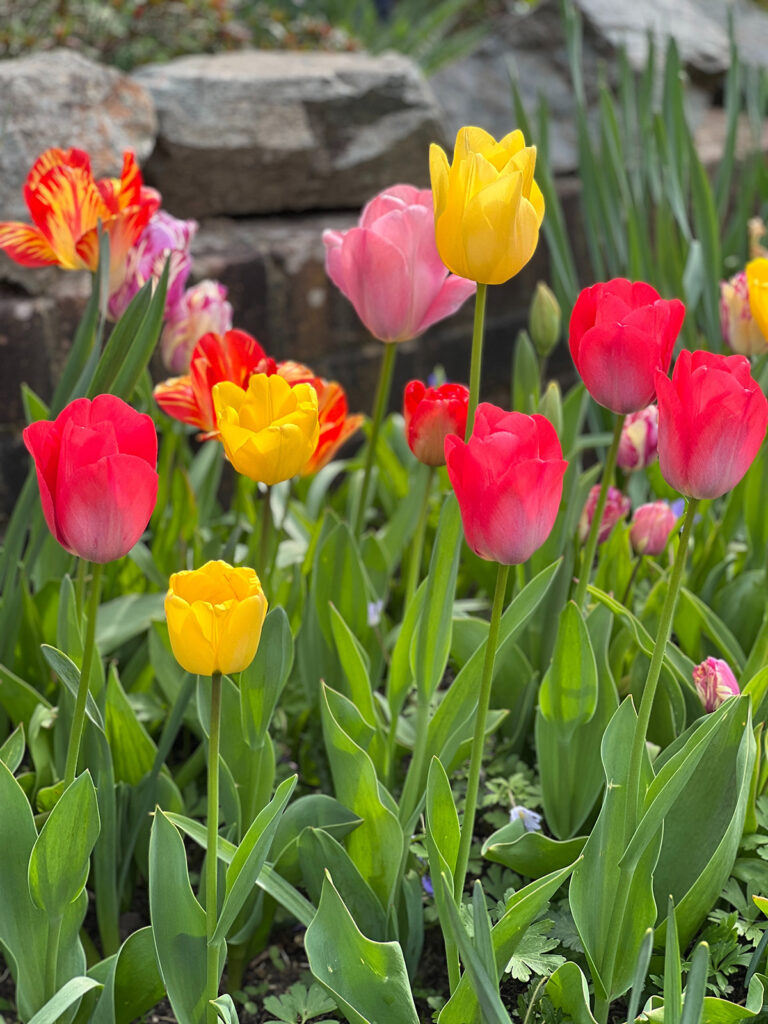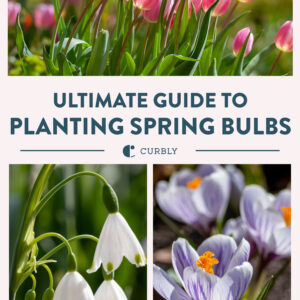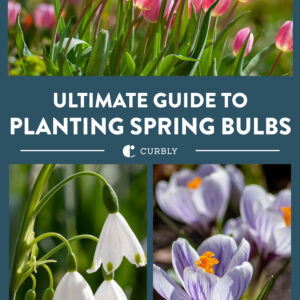The days are getting cooler, the leaves are changing, and fall is officially in the air. And that means it’s time to start planting your spring garden! If you want to enjoy a beautiful display of spring flowers next year, fall is the perfect time to plant those daffodils and tulips.
You don’t have to have a green thumb either; we’ll teach you everything you need to know about choosing the best perennials for your garden, when to plant them, and how to care for them.
It’s crucial to remember that those spring bulbs must be planted before the ground freezes, so let’s get to it!
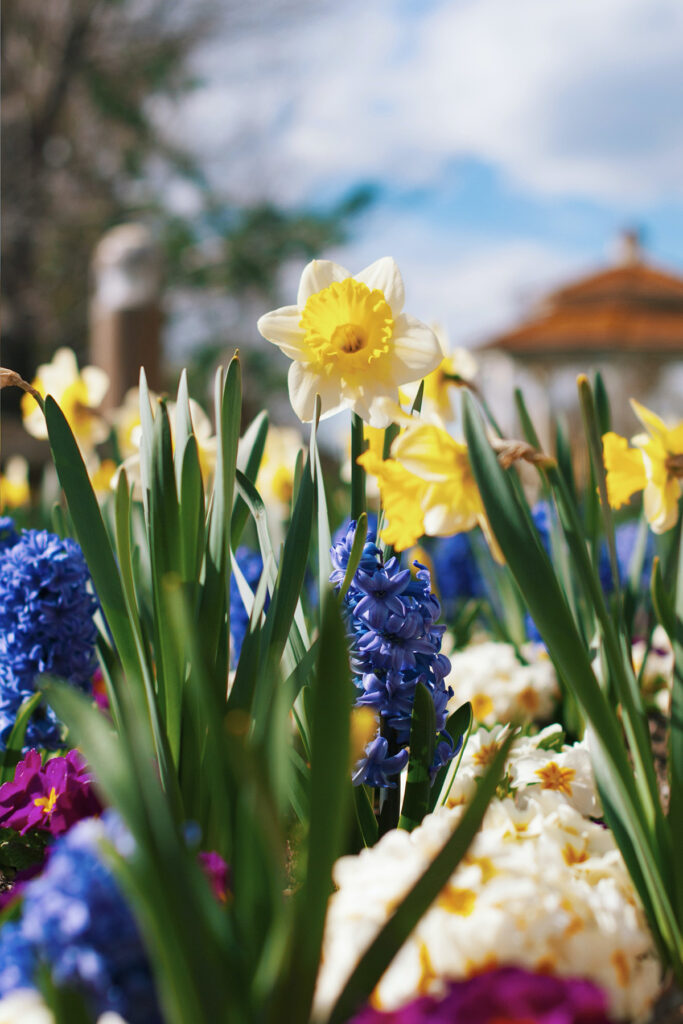
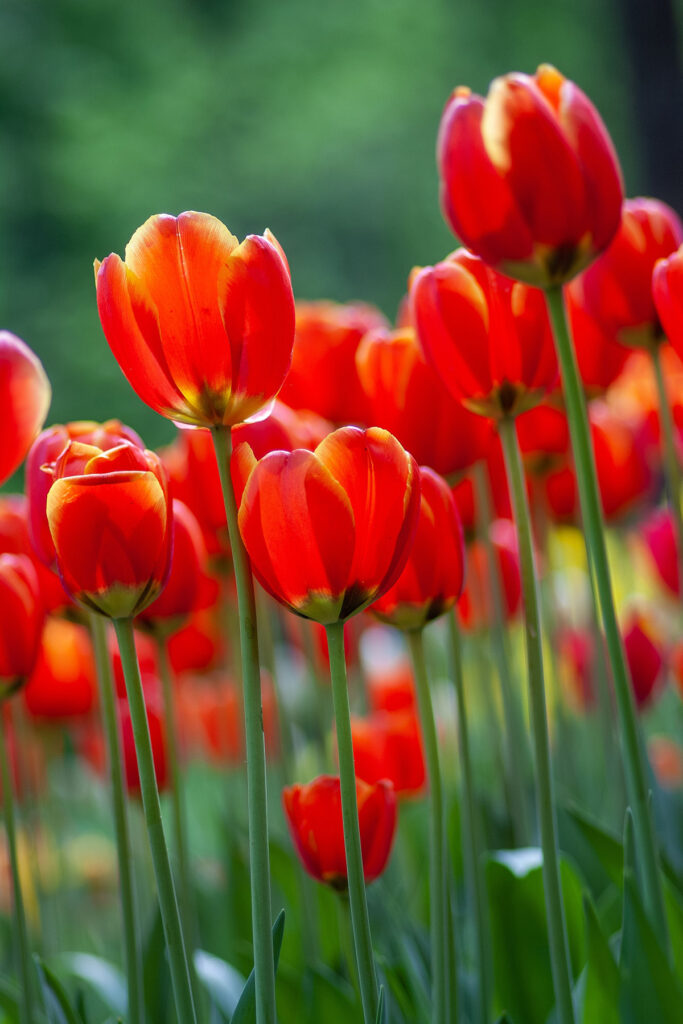
Table of contents
FAQ about Spring Bulbs
It’s best to plant spring bulbs in late fall, before the first frost.
Most of the bulbs included here will appear in early to mid-spring which includes tulips, crocus, snowdrops, daffodils, Siberian Squill, Grape Hyacinth, and more!
You can plant them in the same space, but you’ll want to wait until the soil warms up before you plant fall bulbs in the ground.
It’s confusing, but the best way to keep the varieties (fall, summer, spring) straight is to remember that the season is referring to the bloom season not the planting season. If you plant them in the wrong season, most likely they will not bloom.
Tulips bloom in spring, so they are spring bulbs and planted in the fall.
Yes! Most can, so long as they were planted before the first freeze. Even so, the bulbs I plant in containers I bring into the garage for winter. Just in case. It also keeps the squirrels from digging them up.
Choose the Right Spring Bulbs
Planting spring-flowering bulbs in your garden is the perfect, easy way to transform your outdoor space into a vibrant and colorful oasis that you will love spending time in when the weather warms up.
Classics like tulips and daffodils are always great choices, adding a bright burst of color and cheer to your yard. Or, if you want something a little more unique, crocuses or snowdrops can add a nice hint of elegance to your foliage. And don’t forget hyacinths; they make a garden smell absolutely amazing.
When choosing out your bulbs, consider ones with different bloom times to ensure a continuous display of blooming flowers throughout the spring season.
By carefully selecting the right spring bulbs for your hardiness zone, you can create a stunning garden that welcomes the warmth and beauty of spring into your yard with open arms.
Below, we’ve gathered a list of some of the most popular spring bulbs to help give you some ideas of what to plant in your own garden.
Daffodil (Narcissus spp.)
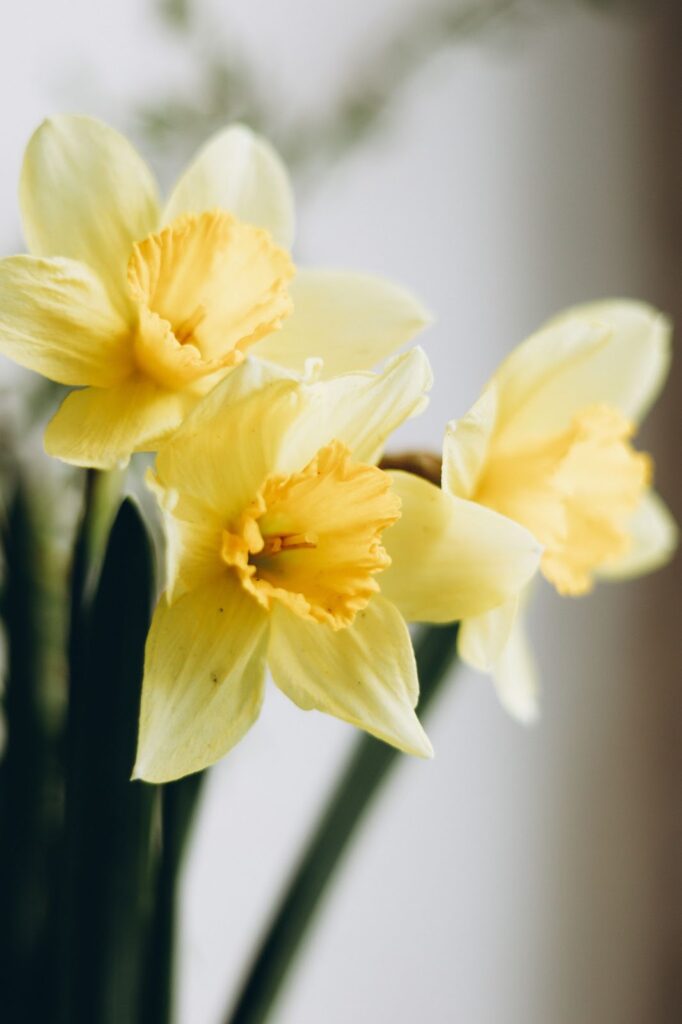
Daffodils are known for their vibrant yellow and orange blooms. These flowers typically feature a central trumpet-shaped corona surrounded by a ring of petals, often found in shades of yellow or white. They are easy to grow and thrive in a variety of soil types.
- Hardiness Zone: 3-8
- Light: Full sun (at least 6 hours a day)
- Bloom season: Early March to early May
- Blooming time: 6 weeks-6 months, depending on hardiness zone
Summer Snowflake (Leucojum aestivum)
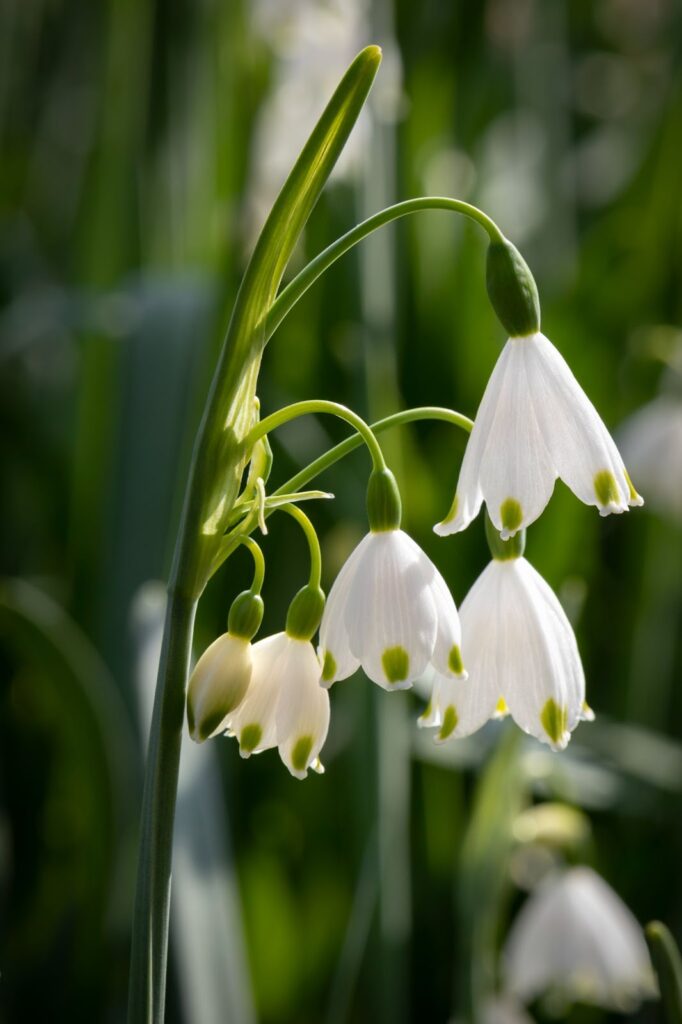
Summer snowflake flowers are delicate and charming, resembling miniature bells. They add a touch of elegance to gardens and are known for their resilience.
- Hardiness Zone: 3-9
- Light: Full sun or light shade
- Bloom season: Late winter to early spring
- Blooming time: 2 weeks or more
Hyacinth (Dutch Hyacinth, Hyacinthus orientalis)
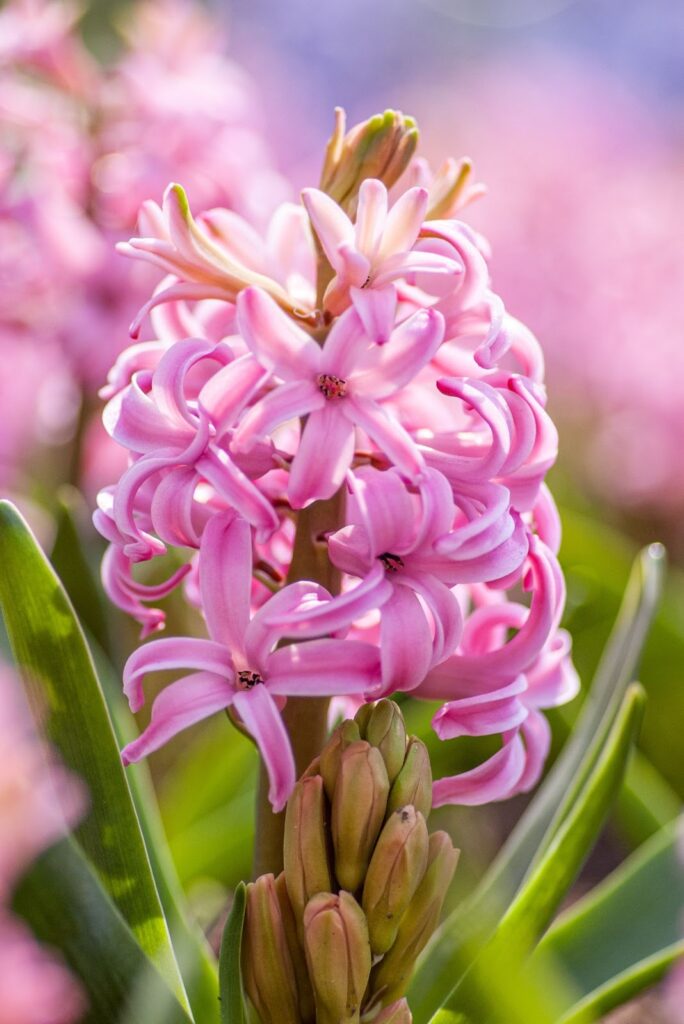
Hyacinths are known for their intoxicating fragrance and vibrant, colorful blooms. They come in various colors, including shades of blue, purple, pink, white, and yellow.
- Hardiness Zone: 4-8
- Light: Full sun
- Bloom season: Between March and May
- Blooming time: 2 weeks or more
Crocus (Crocus sativus)
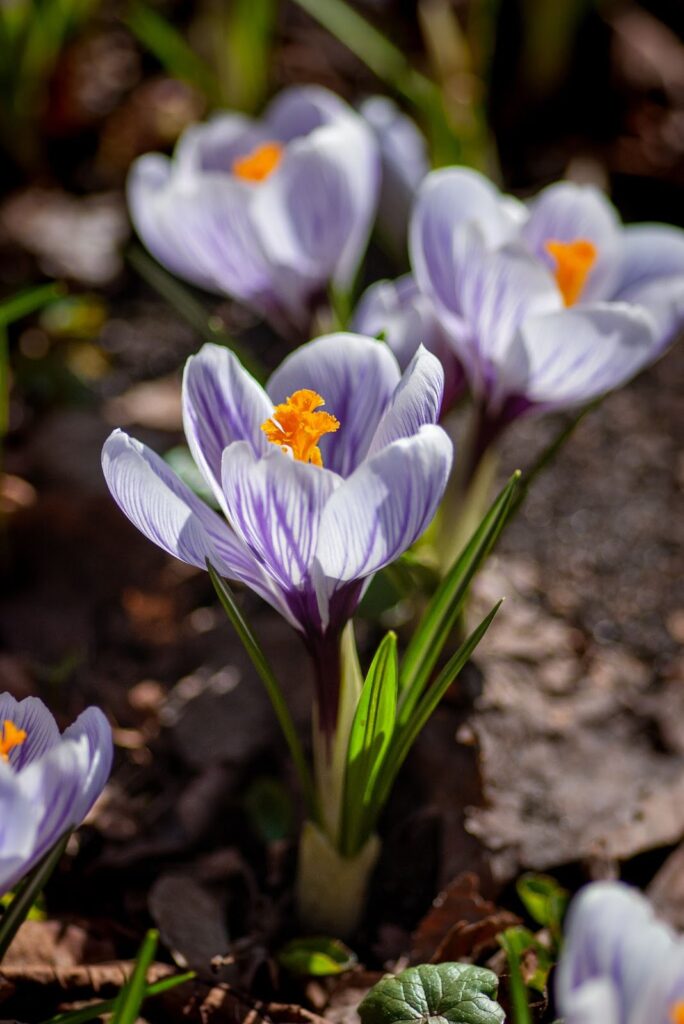
Crocus are enchanting flowers known for their striking, cup-shaped blossoms and appear in various colors, including purple, white, yellow, and lavender.
- Hardiness Zone: 3-8
- Light: Full sun to partial sun
- Bloom season: Late winter to early spring
- Blooming time: 3 weeks
Allium (Allium sativum)
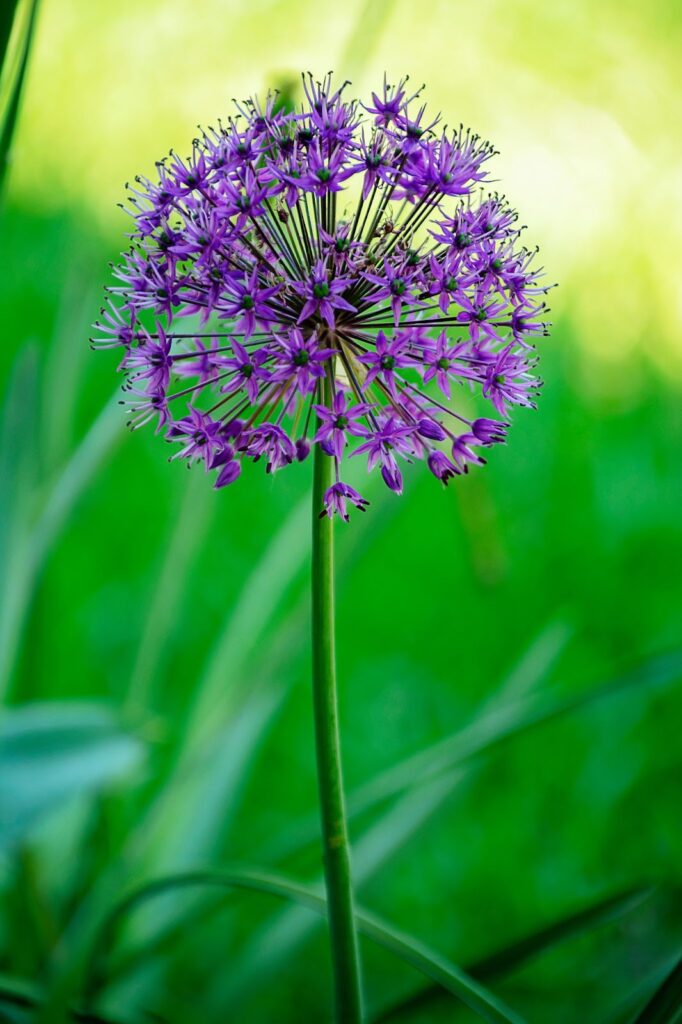
Allium adds drama and interest to gardens and landscapes. Their distinctive spherical/elongated flower heads can be found in shades of purple, pink, white, or blue, adding texture and visual intrigue to gardens. Fun fact! Allium is the latin word for garlic and allium sativum means “cultivated garlic.”
- Hardiness Zone: 3-8
- Light: Full sun (can tolerate partial shade)
- Bloom season: Late spring to early summer
- Blooming time: 2-4 weeks
Grape Hyacinth (Muscari armeniacum)
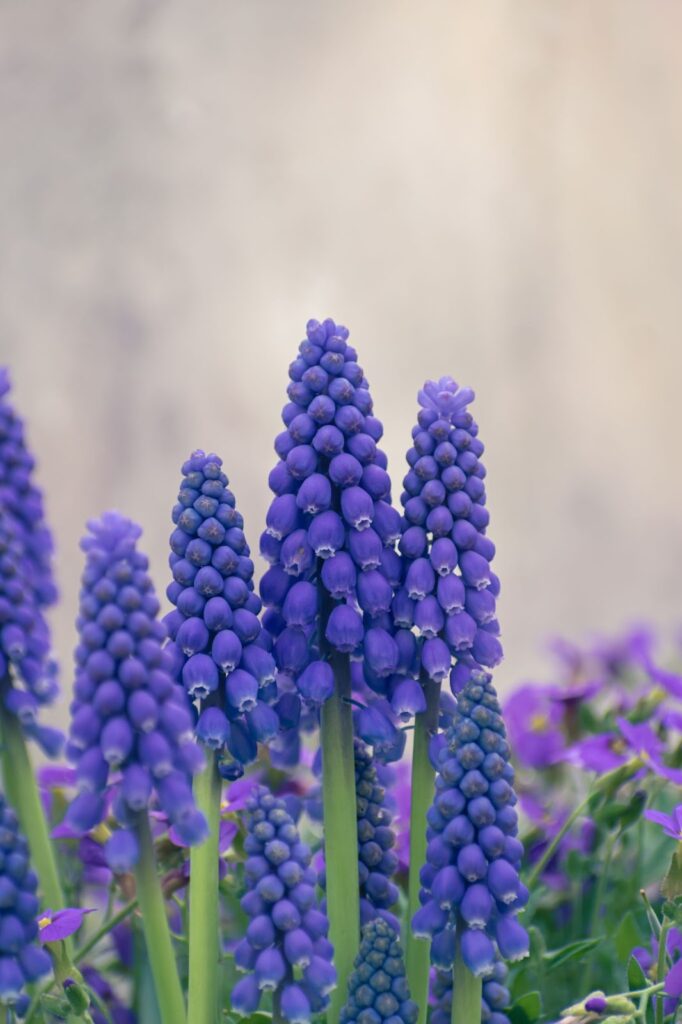
Grape hyacinths are charming bulbs prized for their clusters of petite, bell-shaped flowers. They are known for their vivid blue or purple hues, but also come in white and pink varieties.
- Hardiness Zone: 3-9
- Light: Full sun or light shade
- Bloom season: April-May
- Blooming time: Up to 4 weeks
Starflower (Trientalis borealis)
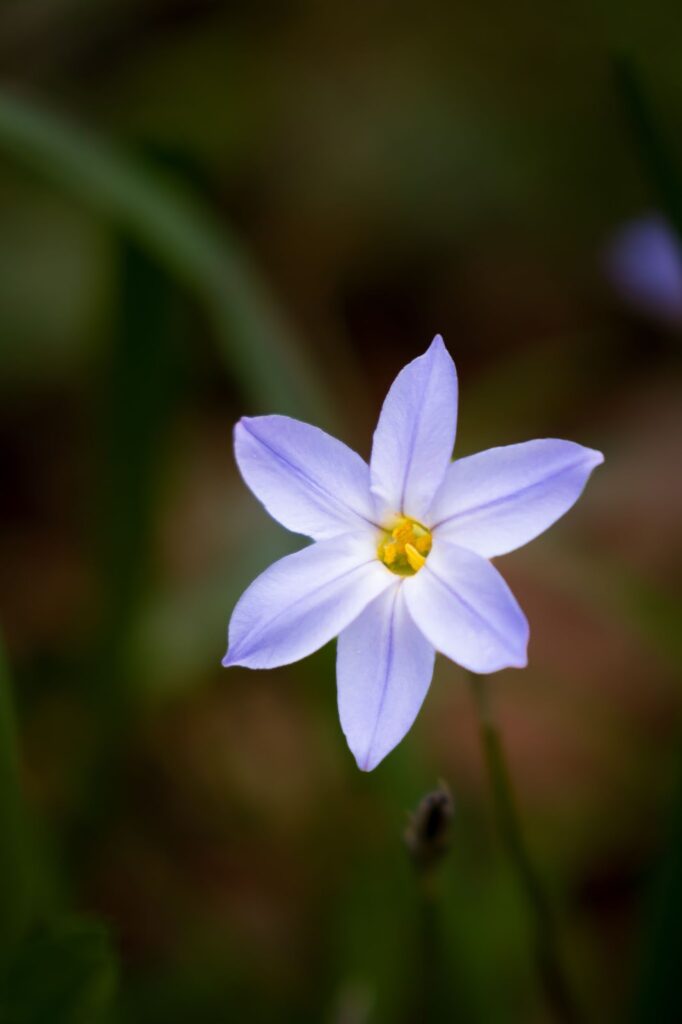
Starflower is a delicate star-shaped flower that comes in white and pink varieties. Its dainty and ethereal appearance makes it a beautiful addition to any flower garden.
- Hardiness Zone: 5-9
- Light: Full sun or partial shade
- Bloom season: Mid to late spring
- Blooming time: 8 weeks
Tulip (Tulipa)
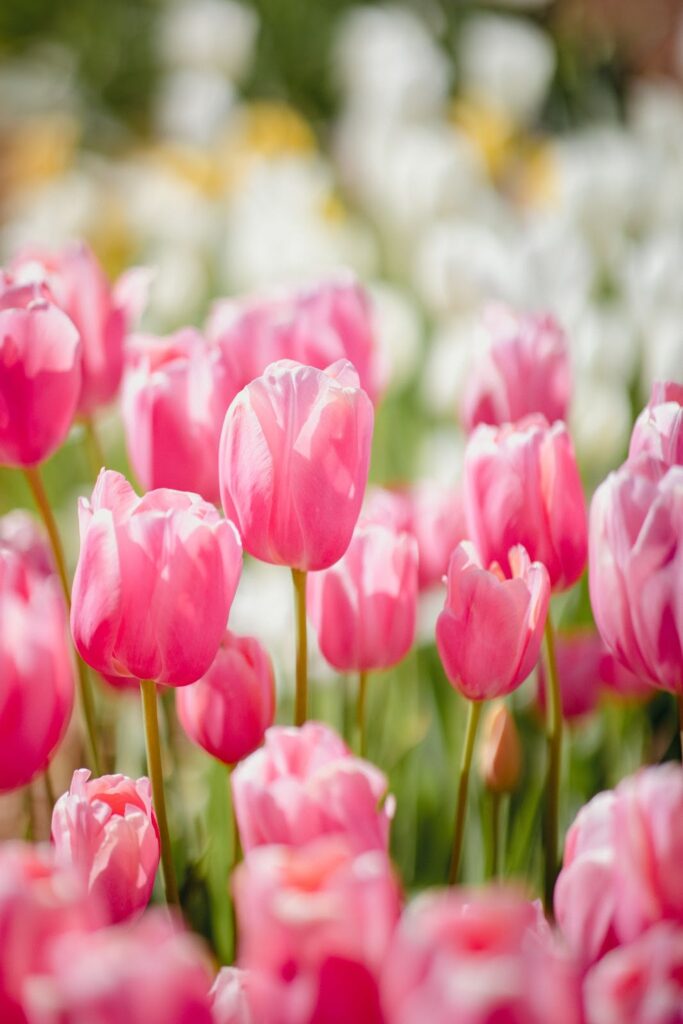
Tulips, one of the most beloved and iconic spring-blooming flowers, are renowned for their diverse colors, elegant shapes, and vibrant beauty. Tulip bulbs come in an impressive range of varieties, from the classic cup-shaped blooms to the striking parrot tulips with their fringed petals.
- Hardiness Zone: 3-7
- Light: Full sun
- Bloom season: End of March to mid-May
- Blooming time: 1-2 weeks
Scilla (Siberian Squill)
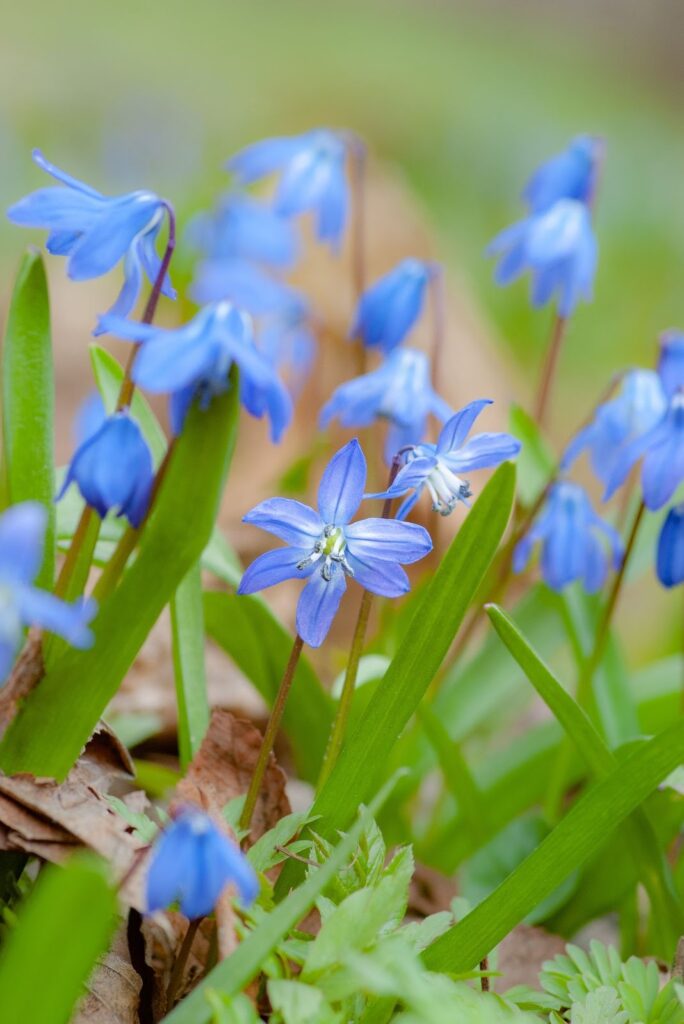
Scilla (or Autumn Scilla, Blue Squill, Cuban Lily, or Siberian Squill) are small, star-shaped flowers that appear in shades of blue, pink, or white. Scilla is often one of the earliest bloomers, signaling the arrival of warmer spring weather with its vivid displays.
- Hardiness Zone: 2-8
- Light: Full sun or partial shade
- Bloom season: March to April
- Blooming time: 2-3 weeks
Dwarf Iris (Iris pumila)
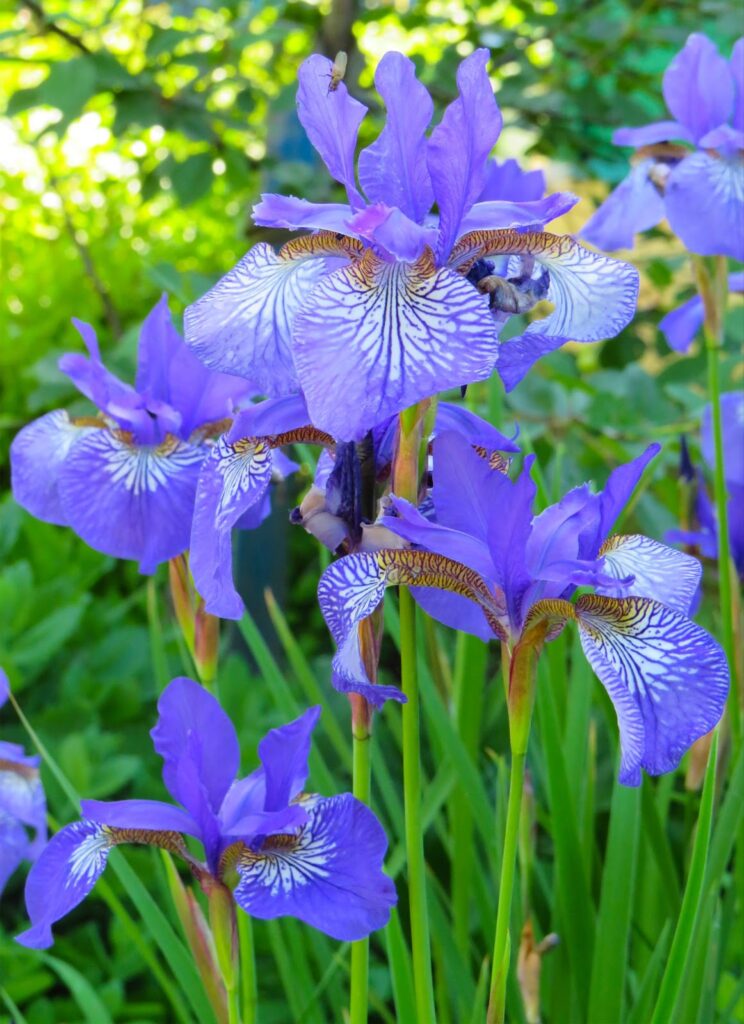
Dwarf irises, known for their petite and elegant appearance, are a delightful group of iris species that offer a burst of color in early spring. Dwarf irises come in various vibrant hues, including purple, blue, yellow, and white shades.
- Hardiness Zone: 5-8
- Light: Full sun
- Bloom season: Late winter to early spring
- Blooming time: 3 weeks
How to Prepare the Soil for Planting Bulbs
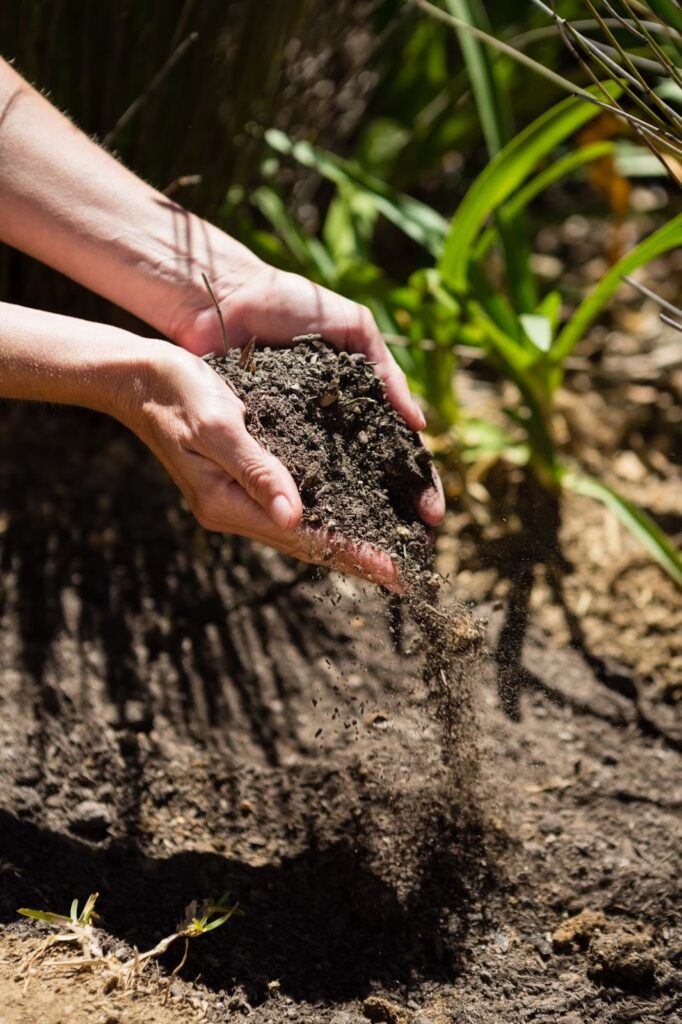
Whether you are planting bulbs directly in a flower bed or in planters, it’s important to take some time to prepare the soil before planting. This is crucial for achieving a beautiful garden in the spring.
Start with soil that has dried out and has cooled to at least 55 degrees Fahrenheit. The soil usually reaches this temperature after the overnight lows have reached 50 degrees Fahrenheit for about two weeks. Soil should have good drainage and be fertile, as flower bulbs prefer soil that is loose, crumbly, and rich in nutrients.
- Begin by removing any rocks, debris, or weeds from the planting area.
- Mix in organic compost or peat moss to improve the texture and fertility of the soil, especially if it is heavy or contains a lot of clay.
- Level the soil and create planting holes deep enough to accommodate the bulbs, following the recommended planting depth for the specific bulb type.
How to Plant Spring Bulbs
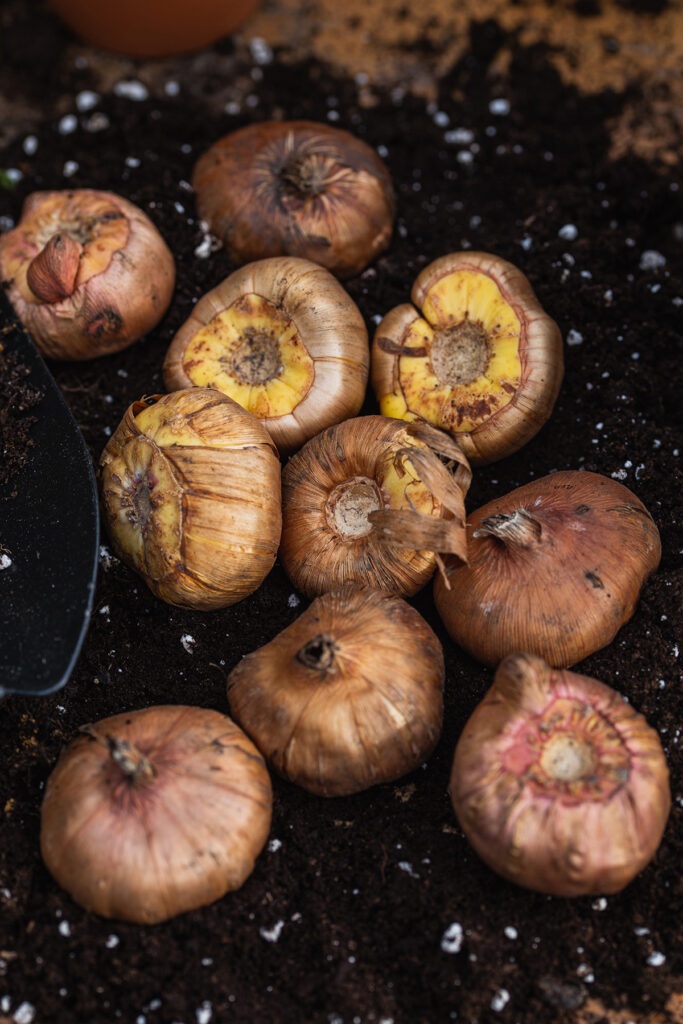
Now that you’ve prepared the soil for your bulbs (sometimes referred to as tubers or rhizomes), it’s time to get down to business and start planting those bulbs! First, ensure you have chosen the right bulb type for your growing conditions, considering sun exposure, soil type, and water requirements. And don’t forget that you need to get your bulb in the ground before the first frost!
How to plant bulbs in the ground:
- Dig a hole two to three times the size of the bulb using a trowel or bulb planter.
- Place the bulb in the hole with the pointed end facing upwards and cover it with soil, gently pressing down to remove any air pockets.
- Repeat the process for each bulb, spacing them according to the recommended planting distance for the specific bulb type.
- Finally, thoroughly water the bulbs and add a mulch layer around the planting area to help retain moisture and suppress weeds.
How to Care for Spring Bulbs
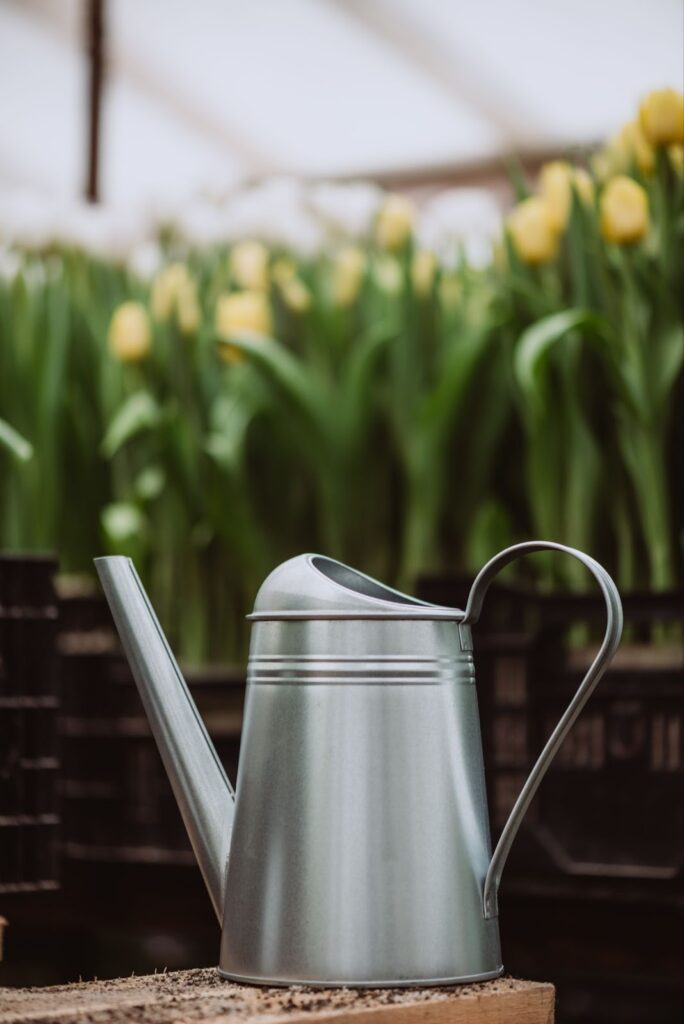
Caring for your spring bulbs after they are planted is essential to ensure their health and vibrancy. Once your bulbs are planted, make sure to water them thoroughly to help settle the soil and encourage their root development.
After that initial watering, the bulbs are only going to require additional water once they are actively growing in the spring. Apply a layer of mulch over the planted area to maintain consistent moisture, regulate temperature fluctuations during the winter, and prevent weeds.
So there you have it! It’s time to roll up your sleeves, grab that trowel, and embark on your own bulb-planting adventure. Happy planting!
There are a variety of bulbs, like dahlias, freesia, and lilies, that you’ll want to wait until the soil warms up before planting. Check out our post about summer bulbs for your late summer, early fall blooms.
